I'm at it again. Having upgraded my phone I couldn't resist adding a gadget that will allow me to recreate some movie style effects - or to simply track something or someone with ease.
Personal Blogs
Based on the interior only, can you name that car? There are 10 of them. I can't name most of them front the exterior. I can get the marque if the badge is clear.
https://www.thinglink.com/video/1291412838811697153
Uses:
Double fisheye stills
Double fisheye video
Double fisheye live streaming
See the Ricoh Theta SC User Guide
With a protruding fisheye lens on both sides of the camera use the pouch to keep the camera in, and to lay it on when charging or uploading images to avoid scratching the lens.
Charging
Only charge through computer USB, not a wall socket.
A red light indicates that it is overheating. Unplug immediately.
Green light on for charge. Light goes out once charged.
A full charge takes 4 hours.
The camera can be operated on its own, though it works best when synched to a smartphone or tablet.
Synching
Synch with smartphone or tablet through wifi
The wifi reference for the camera indicates the password.
For example for camera: THETAJAY30121126.OSC
The password : 30121126 (the numbers only).
This also appears as YJ30121126 in tiny print on the camera itself.
More HERE > Connecting to a SmartPhone
Settings
Choose a network
Turn camera on
Wifi icon lit
Device finds wifi
Password
Wifi connect is meant to be 10m but is more like 5m and will be affected by walls.
Mounting
Hand held
Desk tripod
Tripod with short feet (and weights)
While some of the image immediately below the camera is hidden when the two 360 images are stitched together it helps to use a tripod with a small footprint.
I recommend the Koolehoad Monopod with has tripod legs.
If used outside and it is windy a couple of sandbags on the legs will keep it in place - or use a normal tripod and accept that the legs will show in the bottom of the image.
Camera Settings
The ‘Automatic’ setting rarely gives the best results. Shutter speed will adjust exposure for overly bright, or overly dim images. The White Balance also needs to be set - this ensures that ‘white is white’ whether under bright sunlight, or various kinds of artificial light.
Via device (smartphone or tablet)
Pull on the camera - you will see the image it is getting.
Along the bottom are the settings.
More HERE > on Theta SC Shooting Conditions
Automatic
ISO: (low light or too bright)
Shutter Speed: (low light or fast action)
White Balance: Sunlight vs artificial and all the variations through shadow, neon, lamps. A piece of white card and adjust in the camera.
Video
You can only shoot in auto mode when shooting video. Settings such as the ISO sensitivity, shutter speed, white balance and exposure cannot be configured.
Self-Timer
Unless you want to appear in the shot set the self-timer to 10 Seconds
When you hit ‘shoot’ you get a visual countdown on your phone/tablet and ni the last 4 second a ‘Bleeped’ countdown before the shot is taken.
Shutter Sound
Countdown ‘ping’ and shutter noise to help you get out of the shot.
Images
A double fish-eye lens is best in enclosed spaces and with the subject fairly close.
In the open sky can dominate.
If you want to feature people keep them close to the camera.
Keep a record of the pictures being taken
Best practice to draw a simple lay-out of the room and plot where each 360 image is taken.
Even a small room might benefit from the following shots:
By the entrance door.
Centre of the room.
Each corner
Close to major features.
It makes sense to have the camera at eye level - so 1m 70+ in the room, or at head height on a chair or by a desk.
Any number of further interesting shots with the camera placed on, in or close to things can be added.
For close-ups it is better to use a standard camera and add this image as a ‘hotspot’ link.
Transferring Images
Downloading images
The Ricoh Theta App can be used to view images in 360
These will transfer to the device
Also on the camera
An image is around 3.5-3.8MB.
Click through the Camera Icon Ricoh Theta to Fixed Storage to DCIM to 100RICOH
Then drag and drop into an appropriate folder.
Can ‘Delete all images’ if loading into an image App (but college computers generally do not permit saving to the desktop - images have to be saved to the network).
These images may look like peculiar, double fisheye or panoramic images until on a platform that supports viewing as a 360 image.
Images are backed up on your phone/tablet and can be uploaded from there if images on the Ricoh are lost or deleted.
USB to computer as for charging
Identify device
Select where images will be saved.
Catalogue
Select those to colour correct (if desired)
Adobe Lightroom to adjust:
Exposure
Contrast
Blacks
Whites
Clarity
Sharpness
At this point poor images that can’t be rescued can be deleted, or simply not added to ThingLink.
It also starts to become clear where there may be unnecessary overlap, so an image may not be required. Best to keep it offline.
This might also be the time to ‘redact’ someone who is appearing inadvertently - students would need to sign a release form for content shared online.
Export
The 360 images can be viewed on their own on Facebook or Google Photos and as video on YouTube. They can also be viewed through a 360 headset. An app for smartphones allows images to be broken into left and right eye.
ThingLink
We have been using the platform ThingLink which allows ‘tags’ or ‘hot spots’ to be added, as well as links made between a series of shots to create a VR Tour. This platform can also be used by students to annotate and tag images, whether 2D or 360.
You can try the platform for free for a month, longer by negotiation. It can take a while to bring others on board.
It makes life easier to upload in the approximate order in which the VR Tour will be built and if there are a lot of images to add them in small batches.
Numerous alternative platforms exist to create 3d Architectural spaces and models or tours. All will require a subscription at some point.
Get Organised
List: Camera Ref or renamed.
Best down in landscape
ThingLink URL
Once you have loaded your images onto ThingLink create a ‘Channel’ and post all your images to this.
The order in which they are added can facilitate the creation of a tour by keeping batches of images together, say for a room, and in the chronological order of a typical tour, or indeed the order in which the shots were taken.
Any icons can be used provided by ThingLink though we have a set of GB MET branded arrows/links.
Troubleshooting
Over a series of 20 shots, or use after 45 mins the link between the device (mobile or tablet) may be lost.
Turn the camera on and off - find the link and redo.
Loading images
Check the USB connection until your computer registers the device.
Shot Activation not working
Close the app and re-open until the 360 image appears and the button can be activated.
You keep appearing in the image!
The self-timer has to be reset if the App, phone or camera is turned off.
Updating Firmware
Intermittently the firmware on the camera will require an upgrade
ThingLink are great at improving their platform. Lately this has facilitated creating tours to the point that I describe creating a tour as 'electronic PostIt notes'. You can add voice over narration to the shot directly. You can post content to Google Classroom for lessons. You can download to work or view offline.
I've stitched together three tours which cover each of Electronics, Mechanical Engineering and Electronics labs.
Electronics 360° Interactive http://bit.ly/2uovM2U
Mechanical Engineering 360° Interactive http://bit.ly/2w1imKy
Bricklaying 360° Interactive http://bit.ly/2T9Q6xn
These can be used as they are, ideally if someone clicks around the space telling an audience what they are looking at. To use independently it is so easy to add this voice over. You just click on a scene and talk about it!
As you have seen much more can be added depending on the intended use:
‘Hot spots’ where a video clip, or explanatory text and an image are used.
‘Hot spots’ that click to a close up.
Addition of ‘Interactive Activities’ – as demonstrated here in Catering.
Catering http://bit.ly/2w3izwN
Any one of these ‘360 Tours’ can be ‘cloned’ i.e. copied in its entirety, renamed, and used for a different purpose, for example:
Health & Safety : we add further shots indicating a hazard and students must identify these and understand what to do
‘Teleport’ off site : 360 is wonderful for taking an audience somewhere out of bounds or inaccessible. With the right permissions I could get shots from a nuclear power plant, electricity sub-station, building site … you name it (In a former career I have produced training videos for all of these and many more!)
The first set of colour graded photographs looked far too yellow - as if I had been taking photographs in Spain. A poor computer display, which I ahave still failed to calibrate, exacerbates the problem. Being a whizz I got on and re-graded 16 photos in Adobe Lightroom, rebuild the 360 tour in Thinglink and only then started to add, experimentally, some 'hot spots'.
A stage that awaits a series of etivities, a narrative voice-over and a series of video clips too.
Electrical Workshop : https://www.thinglink.com/video/1286328259365044225
Do we have lift off?
I'm starting to see how a 360° tour of a catering teaching facility using some 16 360° images.
From diving in my lost post I am now elevating into flight mode. I'm something of a co-pilot on this one. I created the stage, as it were, while a colleague created the activities which I have started to embed within it.
Have a go > HERE Catering 23 + Etivities
Let me know how you got on.
For now I'm running with the term coined by Jilly Salmon for 'Interactive Activities' = 'etivities'. I'm not convinced it'll catch up.
Succinctly put by Marc Lewis of the School of Communication Arts, London.
You are either 'flying' : in which case, watch out world, your are taking it by storm!
Or 'gliding' : in which case, you are coasting along well inside your comfort zone, happily underachieving and not challenged.
Or you are 'diving' : you are heading towards the bottom. Nothing you do is right and you have no idea how to get out of this mess.
There's been research on this kind of thing for business school students.
I have been playing around with Thinglink for 18 months. I must have three or four accounts by now, that I run, or that I have set up for others ... and also run.
My latest is a group account so that students I will be working with can take images, add them and collaborate on creating 360 tours.
We are going to be creating a tour of an early years nursery.
Eons ago, perhaps 15 years ago, certainly 10, Jilly Salmon coined the term 'e-tivity'. It never caught on, though I feel compelled to use it rather than 'interactive activities'.
This is what we have here.
It is a set of 10 to 16 simply catering food safety and hygiene related execrises spread across a 360 tour of some 12 or more images around a teaching catering facility.
My First Goal is to add, number and annotate a set of these etivities to a 360 page.
My Second Goal is to spread the etivities strategically across the full 360 tour with Voice Over and text instructions.
My final goal is to add VO to edit video clips to provide 'how tos', hints and insights.
Activities design and built by Mia Pledger, 360 tour created by Jonathan Vernon.
90 minutes talking to 'Uniformed Services' and we came away with 6 or more projects, most major, some minor, to undertake over the next 18 months to support their tutors and students.
The easy part was to locate 6 episods of the court drama 'Murder in the Family' which is used to discuss court procedure and roles. This is now on Planet eStream where I can nip out the adverts and add some notes, even create a playlsist of all five episodes and create an interactive quiz at the end of each.
More complex and exciting will be working with students hoping to become drone pilots for the RAF and RN respectively. This could have me at sea - literally. Qualified to use a RIB they are short of volunteers to go out with the students.
And then 360 tours to create of a crime scene.
Video footage of gun and limber junior trials.
And surveillance work for conference centres and hotels.
CPR
Health, Fitness and Wellbeing to Armed Services entry standard ...
Quite a mix. Quite exciting.
Smiling is infectious
You catch it like the flu,
When someone smiled at me today,
I started smiling too.
I passed around the corner
And someone saw me grin.
When he smiled I realized
I’d passed it on to him.
I thought about that smile,
Then realized its worth.
A single smile, just like mine
Could travel round the earth.
So if you feel a smile begin,
Don’t leave it undetected.
Let’s start an epidemic quick
And get the world infected!
Photograph: Martin Godwin for the Guardian
Ten years ago I started a student blog at the behest of the OU as part of the Masters in Open & Distance Education (MAODE). This was my second go at this having started nine years previously with the MAODL (Distance Learning).
I came from corporate training. Coming from teaching might have been more appropriate, and teaching in Higher Education in particular. I thought the outcome would be back into industry, whereas it has instead been a route into Education. It might have lead to research. I did prepare a PhD thesis and took this to Southampton.
Events closer to home have me reflecting on the power of story, no matter how or where it is expressed. We are highly tuned in to pay attention to a well told drama.
Our drama lately has been a broken arm (not me) and the unexpected knock on effects and lessons learnt in relation to the medical systems and approach in France and the UK, to being freelance or working fulltime, and a wake up call to what it takes to care for someone.
The story of this break and its consequences is shared with friends and over a few days it finds its own shape. You learn how to retain attention as one event and its consequences and all the subsequent decissions that are taken, and their consequences too. Let alone the other brickbats that get thrown your way to complicate it all further.
And the conclusion is?
Count your blessings
Smile and get on with it
Remember your friends and family as they remember you
Be prepared for this and worse happening
And in relation to learning?
Holding a students attention
Providing engagement which has a purposeful direction
Letting people draw their own conclusions
Listen to feedback and add this to the lessons being learnt
The vitality that comes from a story with emotional appeal, crisis, pain and laughter, consequences and outcomes.
We could do with a lot of these up all over our campus. I'm not convinced many people will understand what to 'expectorate promiscuously' means. It could be put more bluntly. 'Don't violently or frequently sneeze your snot and germs around and about'.
Or some such.
The science of sneezing courtesy of MIT
> The distance germs can travel
One powerful sneeze, unhindered, will fill a room.
> Allergies, sinus infections and sneezing ...
> Sneeze Reflex : Facts and Fiction
So frustrating if you create something for mobile devices only to find that in fact this functionality works best on a larger screen.
Are your computers ‘sanitized’ - given a clean - of any kind?
My concern for staff who hot desk (me) and students is that they will often sit down at a computer where someone has sneezed onto the keyboard and screen without any attempt whatsoever to shield their environment from the germs they are spreading.
I see this often. What about you?
The answer is to educate staff and students.
Add cleaning keyboards and screens to what the cleaning staff do.
Get rid of the multitude of ‘Press this Button’ pads that used used to enter the building , and libraries and corridors.
Students and staff touch these repeatedly across the day so no wonder germs spread fast and so many people end up off ill.
Without frequent handwashing it is hardly surprising that so many people end up ill
This MOOC on Coursera from Melbourne University looks interesting.
This MOOC is designed principally for practicing teachers who are wondering exactly how they can incorporate teaching and assessment of 21st century skills into their classrooms, labs or workshops. It will also be useful to trainee teachers, school leaders, teacher educators and curriculum and assessment specialists, providing them with an understanding of the challenges associated with teaching and assessment of 21st century skills. This course explains the social and cognitive skills that are known as 21st century skills. It reviews how they can be represented in the curriculum, in terms of developmental progressions. It also explores how teachers can recognise these skills in students, how the level of skill of a learner can be assessed, and then how learners can be supported to develop their skill. In this course we work through two detailed examples of 21st century skills. The first is collaborative problem solving, a 21st century skill which combines the capacities of collaboration, problem solving, critical thinking and communication. The second skill is a meta-cognitive skill of knowing how to learn in a MOOC. In each example, you will explore how to understand the nature of each skill from a teaching perspective, how to teach it, and how to assess it. These two examples show how any 21st century skill can be tackled in the classroom. The approach to teaching and assessment in this course derives from the application of a developmental, evidence-based, clinical approach to teaching practice. The course provides a mix of theory and practice, of thinking and doing, and opportunities to share ideas, experience and resources with other participants. Join Emeritus Professor Patrick Griffin and the team from the Assessment Research Centre, University of Melbourne in a Massive Open Online Course (MOOC) on the Assessment and Teaching of 21st Century Skills, hosted on Coursera.
Hoping that we may be able to partner with FutureLearn to generate content we have been politely turned down.
FutureLearn is focused on partnering with Top 400 Universities worldwide or nationally/globally renowned organisations backed by strong academic research and with a clear educational remit and capacity, such as UNESCO, The British Council, or the Houses of Parliament.
> Becoming a FutureLearn partner
Organisations that do not meet these requirements, in order to develop a course should approach 'one of our existing partners' or a.n.other agency/partner.
An aide-memoire for me. An link to an interesting resource for you! Ever mindful of my need and desire to take and pass a series of Google Educator Certification Exams (levels 1 & 2 and trainer) and needing to be on the pulse of what Google Education is doing (conquering every classroom on the planet), makes this of interest:
Google's Applied Digital Skills
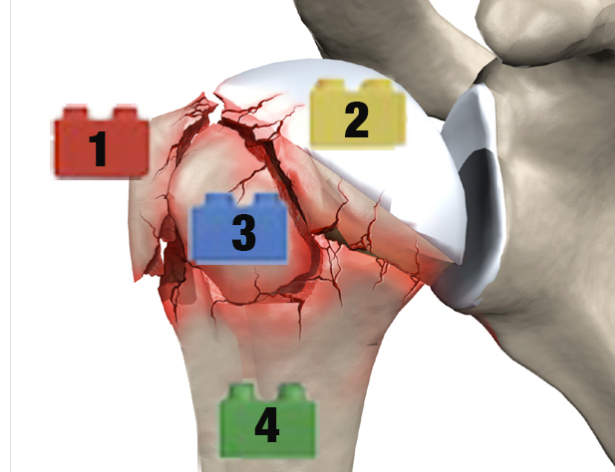
Showing her true metal and drilling through every piece of information available relating to a displacement fracture of the upper humerus, and comparing French with English approaches, is now touching on my knowledge and experience of online learning in interesting ways.
A fall on a ski slope and thoughts of a dislocated shoulder saw us in a Cabinet Medical oat the bottom of the slope (Flaine) then a visit to a French Hospital. Triaged and seen within 90 minutes, an x-ray then a wheelchair to a room. Would a CT scan be required? Would it be taken then and there, or the next day? Would there be surgery involved?
Two days later we were in England, once again in A & E and once again faced with the question of whether a CT Scan was necessary. The CT Scan finally took place 9 days after the accident. X Rays had put the break on the cusp of needing further investigation to decide if surgery was required. It isn't - apparently.
In France surgery had been thought likely the day after the accident, then delayed to the following week. In England it was thought highly unlikely that there would be surgery - so no invasive procedure to add nails or plates to stabilise the two displaced fractures that had been identified.
Here comes the online learning bit. The 'Virtual Treatment' that has a dependency of online content, and video tutorials. Needless to say we are given bits of paper printed out, needless to say a copy of the CT scan comes on a disc, not via WeTransfer or Dropbox, needless to say 'we' (It is of course my wife) is on the phone and I am taking her in to see someone to change an unsatisfactory sling, or to seek more convincing advice on exercises required for her break at this time.
The issue when it comes to e-learning is this: what does replacing the human face to face contact of a subject matter expect, a mentor (1 to 1), a tutor (small group) or a teacher (class) have either advantages or disadvantages? Thinking we must do away with one and do everything online is foolish. Indeed, I am rather wondering that by directing people online and by default inviting those with any aptitude to search online they come away with far, far more unanswered questions that will have to be dealt with by a person.
If I had £500,000 to spend on education in an institution am I going to spend it on tablets, desktops and Virtual googles, or a some informed, bright and motivated teachers?
Links > Lego Humerus Fracture article
As a patient my wife has access to the Virtual Fracture Clinic. Here we have there are clear, excellent direct to camera explanations and demonstrations. However, not embedded correctly these are difficult to use on an old iPhone. They of course assume that patients have ready access to the Internet - is that likely where those presenting with this kind of injury have an average age of 72? And then too much of the text is aimed at management and senior clinicians. When nursing her arm and struggling to understand the right approach to take to pain relief, one of three different slings she has now used and physiotherapy does she really need to be made to feel that the primary goal and achievement of the Virtual Fracture Clinic is to save money? £250,000 we are told since it was set up.
Wherein we can once again make a comparison to education.
The aim is to teach more students well for less money. To have fewer teachers managing more students and getting at least the same results (ideally better) and so saving money.
I feel a backlash is over due. More and better teachers in front of smaller classes, with more face to face time for personalised feedback is the answer.
Take these videos on how to put on a sling for a fractured limb. Useful as an aide memoire after a face to face demo, but think of the differences between a child, teenager, fit middle age or over weight elderly person, make or female ? There is no one-size fits all video. Rather a consultation should be recorded and shared with the online savvy patient.
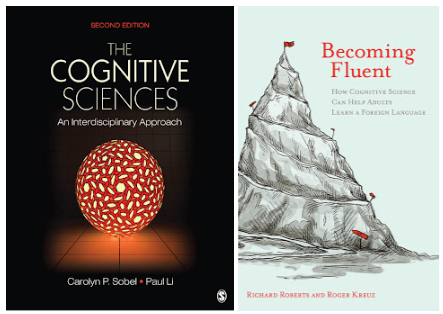
And thus another learning journey begins. The books are a start with 'Becoming Fluent' in audible form so that I can plug it in and listen through. As much as anything I want to try something new (new to me at least). I like reading along, but can I do that? I find on YouTube running the subtitles while watching helps me catch words and phrases that I might otherwise miss.
I also searched online courses and have thus far tried Coursera and FutureLearn. I risk becoming that statistic of students who sign up but never start. Whether a course gains traction or not is down to the ability of the course creators to engage and feed my current enthusiasm at the right level and in the right way - this learning business is just that, a business, and a competitive one.
I ought to check Open Learn of course and a myriad of other online course providers.
I get serious when I return to the likes of the Open University and pay proper money to do a tutor led designed and credited course.
Though on holiday I find myself stepping back into my role as the Digital Editor for The Western Front Association as I'm kicking around a ski apartment with a stinking cold. This allows me to follow a thread on our @TheWFA Twitter feed discussing the Sam Mendes film 1917 at length in which there has been some discussion on whether or not Sikhs would have been part of the British Army on the Western Front in 1917.
As well as Sikhs, there were Punjabis, Gurkhas and others in combatant and non-combatant roles, as officers and sepoys (privates) from across what was then called India or the Indian Empire and comprise modern India, Pakistan and Bangladesh, as well as Burma and soldiers from the North West Frontier (Kashmir), Afghanistan and Nepal.
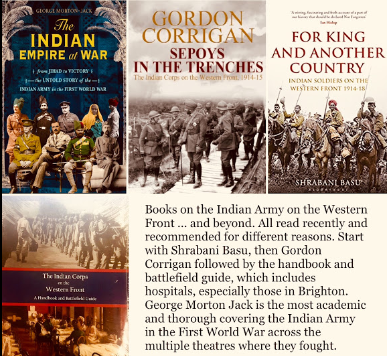
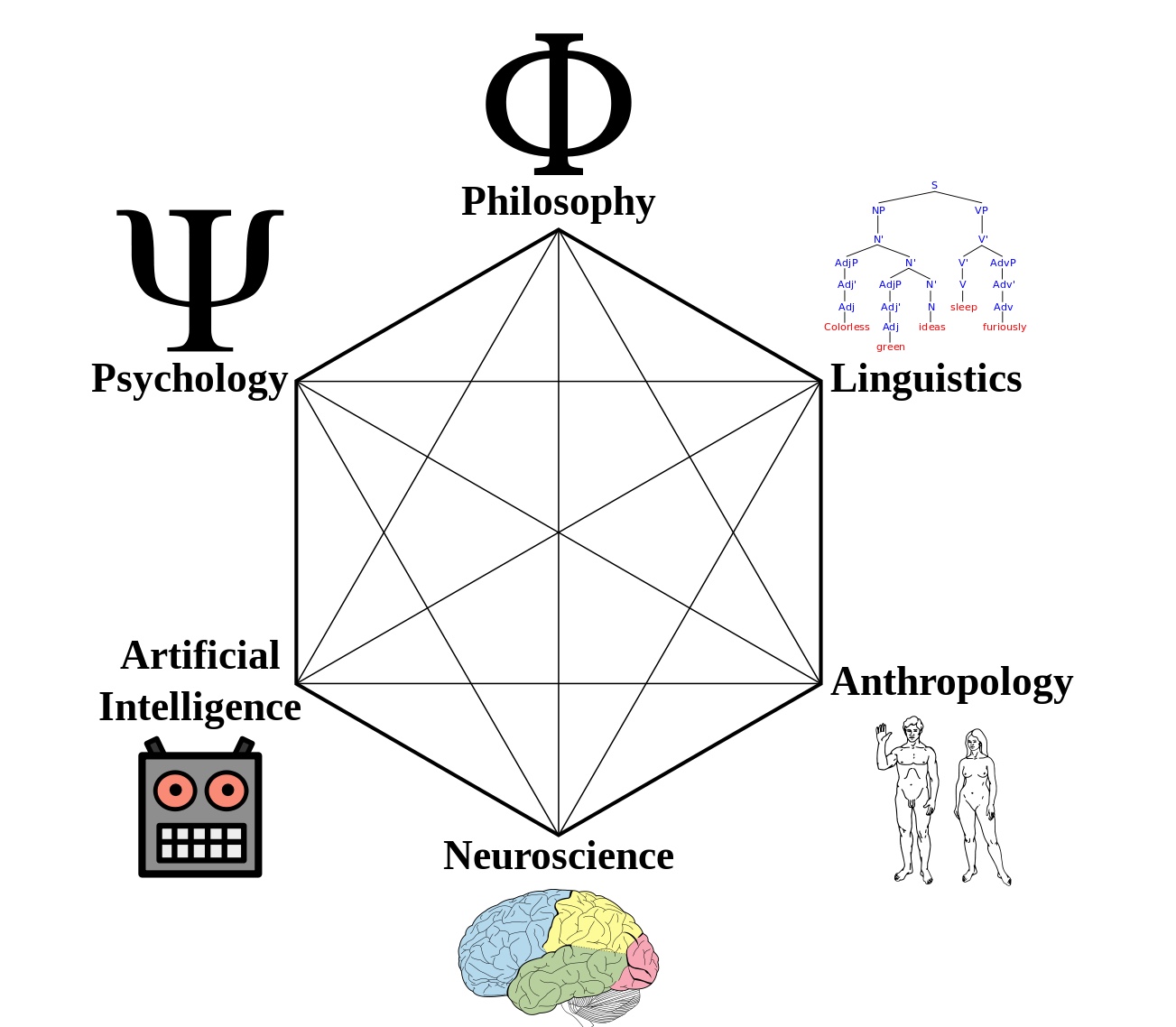
We came on holiday on Friday and faced a first in the French Alps: rain and the need for umbrellas. Rain low down meant snow up top so this cloud had a silver lining. However I fell ill with a cold bad enough to keep me in bed, then one of the party broke their wrist and having only just ventured out myself and gently traversing a piste to stop for lunch my wife fell badly and broke her arm - actually she was convinced it was ‘just’ a dislocated shoulder so we skied down to a ‘station’ - not ours, to visit the Cabinet Medical. All was not good - a complicated fracture at the top of the arm requiring surgery. So off to hospital. Ski gear, no other shoes, no change of clothes. A taxi journey some 40km back and forth to where we are staying. And I had planned to take the afternoon off rather than aggravate my cold. Ill and worried I have slept little.
However, I did sign up to study a new FutureLearn Course in British History 1815 to 1945 and also convinced myself that I have the makings of a Cognitive Scientist.
With skis back to the hire shop and me back and forth to a hospital each day until we fly home on Sunday (or not!) I may be able to get some studying done. I can get through a text book a day when I am motivated, travelling or otherwise not distracted.
https://tourbuilder.withgoogle.com/tour/ahJzfmd3ZWItdG91cmJ1aWxkZXJyEQsSBFRvdXIYgIDgoIyIngsM
Hoping you can view this. I kind of interactive slideshow pinned to a map. In this case I roughly trace my grandather's war years, from growing up in County Durham (Shotley Bridge) to enlisting with the Durham Light Infantry, transfer to the Machine Gun Corps, then experience on the Western Front, surviging Neuve Chappelle, the Somme and Third Ypres.
On 27th December 1917 his transfer papers came through and he joined the Royal Flying Corps (his kid brother had joined as mechanic the summer before and had then gained a commission as a bomber pilot).
He then moved around from Hastings, to Bristol, and Uxbridge ending up with flight training out of RAF Crail, Fife from September 1918 to November 1918. He remaiend in Crail during the demob until May 1919.
Sadly his brother was killed that summer flying mail over Belgium to Germany.
Only in 1992 did Jack return to Ypres, retracing his steps with the author Lyn Macdonald and paying his respects to his friends who had died at the Menin Gate and Tyne Cot Cemetery.
I made this today:
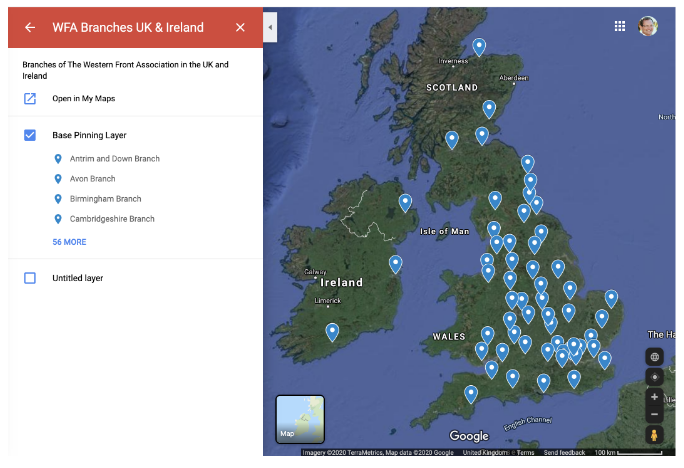
This is is part of my Google Educator Level II training. Today I am working on a Google Tour > an interactive itinerary that pops up with images and text. I can also use video and 360° images which I will have a go with too in due course.
This blog might contain posts that are only visible to logged-in users, or where only logged-in users can comment. If you have an account on the system, please log in for full access.